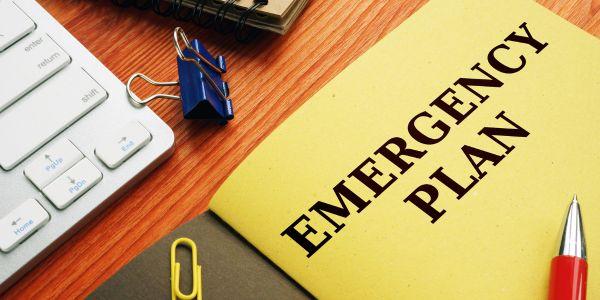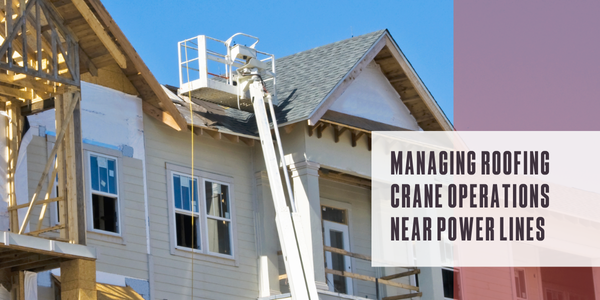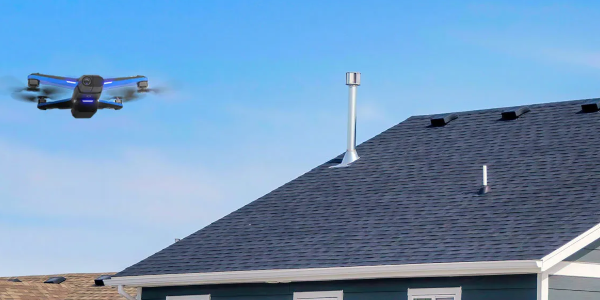UP TO THE MINUTE
Is your roofing company prepared for an emergency?

By Cotney Consulting Group.
Creating and implementing an EAP fosters unity and preparedness within your team.
Emergencies can strike at times. For roofing contractors, having a well-developed Emergency Action Plan (EAP) is a regulatory requirement from OSHA and a crucial component of workplace safety. Here's a step-by-step guide to creating and implementing an effective EAP to ensure the highest level of safety and preparedness.
1 - Create an emergency response team (ERT)
Forming an Emergency Response Team is the first step in developing an effective EAP. This team should include members from all levels of the organization to ensure widespread buy-in and comprehensive coverage. The ERT is responsible for coordinating the development, implementation and maintenance of the EAP, and their involvement is crucial for minimizing injuries, illnesses and potential fatalities.
2 - Recognize and assess potential emergencies
Identify the types of emergencies that could occur at your worksite. Consider hazards specific to your facility and work areas, such as fires, severe weather events (e.g., tornadoes, floods, hurricanes), accidental releases of hazardous chemicals and medical emergencies requiring first aid or CPR. Understanding these risks is essential for tailoring your EAP to your specific needs.
3 - Develop clear and effective emergency procedures
Create detailed procedures for each identified emergency scenario. These procedures should outline the actions to take during an emergency, including who the first responders are, where the evacuation meeting points are located and the steps to take in the event of specific incidents like explosions or hazardous material spills. Clear protocols ensure everyone knows their role and can act swiftly and safely.
4 - Complete emergency equipment identification and location
Ensure that emergency equipment such as first aid kits, fire extinguishers and automated external defibrillators (AEDs) are readily accessible and clearly marked. Proper signage and easy access to this equipment can make a critical difference in an emergency. Regularly check and maintain these items to ensure they are in working order when needed.
5 - Conduct emergency equipment training
Train your employees on how to use emergency equipment. This includes fire extinguisher training (using the PASS method: Pull pin, Aim, Squeeze, Sweep) and first aid/CPR/AED certification. OSHA requires that employees be trained in the use of fire extinguishers and in providing first aid/CPR. Regularly scheduled training ensures that your team remains prepared and confident in their ability to respond.
6 - Identify location and contact for external emergency facilities
Make sure all employees know how to contact external emergency services such as fire stations, medical facilities and police stations. Provide clear instructions and contact details so employees can act quickly if outside assistance is needed.
7 - Establish alarm and emergency communication requirements
Develop a reliable system to notify employees and designated personnel in case of an emergency. This could include a central alarm system, radio communication or designated personnel responsible for informing others. Prompt communication is essential for a swift and organized response.
8 - Document and communicate procedures for rescue and evacuation
Create a comprehensive plan for rescue and evacuation, including designated emergency assembly (DEA) locations. Clearly document and communicate these procedures to minimize confusion and ensure safety. Include maps of DEA locations and assign roles for headcounts and first-aid responsibilities.
9 - Assign emergency contacts
Identify and document the key contacts to be notified in an emergency. Ensure that these individuals are informed promptly. Your EAP should list each emergency contact's full name, title and phone number, such as the safety manager, supervisors and foremen.
10 - Complete periodic practice drills
Regularly conduct emergency practice drills to test your EAP's effectiveness and identify areas for improvement. These drills help ensure everyone knows what to do in an emergency and can act quickly and efficiently.
Benefits of a well-implemented EAP
Creating and implementing an EAP fosters unity and preparedness within your team. When employees from all levels participate in developing the plan, it builds camaraderie, synchrony and a sense of pride in the company's commitment to safety. Regular training and drills reinforce the importance of each element in the EAP and instill a sense of responsibility among workers.
An effective Emergency Action Plan is crucial for ensuring safety and compliance in the roofing industry. Following these ten steps, you can create a robust EAP that prepares your team to handle emergencies efficiently and effectively. The commitment to safety demonstrated by the development, implementation and execution of your EAP will protect your employees and enhance your company's reputation and operational resilience.
Ensure your company is prepared for emergencies by fostering a safety culture, continuous improvement and proactive planning. Your investment in an effective EAP will pay dividends in the form of a safer, more prepared workforce.
Learn more about Cotney Consulting Group in their Coffee Shop Directory or visit www.cotneyconsulting.com.





















Comments
Leave a Reply
Have an account? Login to leave a comment!
Sign In